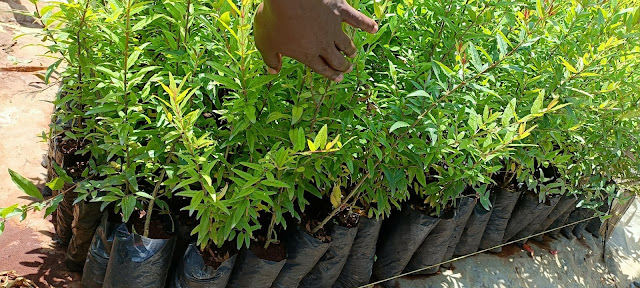Malkia Curly kale popularly known as ‘Sukuma matumbo’ in Kenya is
a specific kale variety of elongated leaves with wavy to curly margins. Just
like other kale varieties, Malkia Kale is believed to have originated in the
Eastern Mediterranean and Asia Minor. It is an early maturing kale variety that
produces large sized leaves and is known for its high yield.
 |
| Malkia Curly Kale |
Ideal
climatic conditions for Malkia Curly Kale farming in Kenya
Curly
kale thrives in cool climates with temperatures ranging between 15 to 24 degrees Celsius. It does well in well-drained fertile soils that are rich in organic
matter with a slightly acidic to neutral pH(6.0-7.0).
Step
by step process for planting Malkia Curly Kale.
1. Soil Preparation
ü Choose
well-drained soil rich in organic matter.
ü Ensure
a slightly acidic to neutral Ph (6.0-7.0).
ü Till (dig up) the soil to obtain a soft and fine texture.
2. Seedling transplanting
ü Obtain ready to plant seedlings from Richfarm Kenya: simply call them on 0724698357 / 0723213602 / 0798919007 to order your seedlings.
ü Make a small hole on the prepared soil; just enough to cover the root bud of the seedling. Be sure not to burry the seedling too deep.
3. Spacing
ü Space seedlings 30 to 45 cm (12-18 inches) apart for proper growth. We recommend that you space the lines 45 cm from each other and the plants 30cm from each other.
4. Watering
ü Keep
the soil consistently moist but not water-logged. Being a leafy vegetable, overhead irrigation using a sprinkler would be the best method to irrigate.
5. Timing
ü The kale should be planted in a season with favourable growing conditions. Plant your seedlings when temperatures are between 15-24 degree Celsius for optimal growth. If it isn't raining, ensure that you sufficiently water the soils before doing the actual seedling transplanting.
6. Pest and Disease management
ü Regularly
inspect for pests and diseases. Address any issues promptly. See the pest and disease management section below to learn about the common pests and diseases affacting Malkia curly kale farmers in Kenya and how to control them.
7. Harvesting
ü Harvest
by picking outer leaves first, leaving the central bud intact.
Watering
requirements.
A
farmer should aim at keeping the soil consistently moist for Malkia kale
through regular watering while ensuring there is a good airflow, and the soil
is not waterlogged. However, the watering frequency will depend on the weather
conditions- hotter and drier climates may require more frequent watering as
opposed to wet and cooler regions. Watering deeply ensures strong root
development. Mulching is also encouraged around the kale to help retain soil
moisture and suppress weeds.
Why
should you consider growing Malkia Curly Kale?
· It
produces a high yield.
· It
is an early maturing kale variety.
Nutritional
benefits of Malkia Curly Kale.
Sukuma
wiki being one of the most consumed vegetable in Kenya, Malkia curly kale
specifically has earned itself more popularity in the recent times due to its
high nutritional value. It’s a nutrient powerhouse if we may say. It is rich in
Vitamin A, C and K along with nutrients like Calcium and Potassium. What a
fantastic additional to a healthy diet!
Pest
and Diseases
.jpg) |
| Infected Malkia Curly Kale |
Something
you probably didn’t know about Malkia Kale.
Beyond
salads, it can be used in smoothies, soups, or even baked into crispy kale
chips. Its nutrient density and ability to thrive in various dishes makes it a
culinary gem.
Experts
at the Sim law seeds under the KENYA SEED COMPANY stated that it has lesser
acid properties than the other kale varieties hence it is considered best for
ulcer patients.

















